Once a baby is born the midwife or doctor will carefully check the placenta to ensure that no part of the placenta or membranes have remained inside the uterus. If any part of the placenta or membranes has been retained in the uterus, it can cause a postpartum haemorrhage and/or infection. The process of checking the placenta should take place as soon as possible after birth.
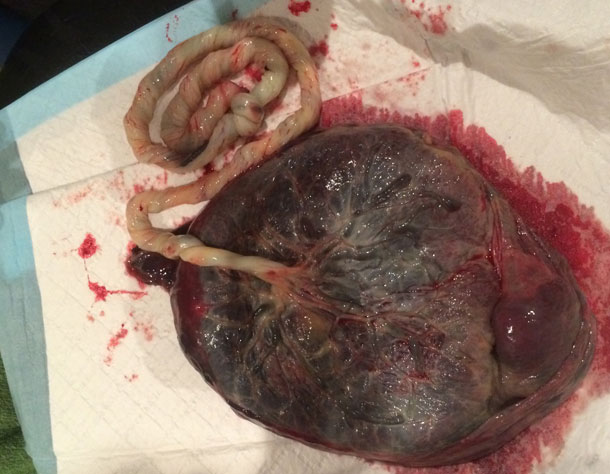
When a baby is born at full term (37 to 42 weeks) and the placenta is healthy, it will measure approximately 15 to 20 cm in diameter and will be around 2.0 to 2.5 cm thick. A placenta weighs approximately 500 to 600 grams, which is approximately one-sixth of the baby’s birth weight. The size and weight of the placenta can vary considerably depending on the baby’s ethnicity, whether there were any pregnancy problems and how much the baby weighed.
In the photo above you can see the baby’s side of the placenta.
A healthy placenta is should look shiny, grey and translucent so that you can see the colour of the underlying placental tissue.
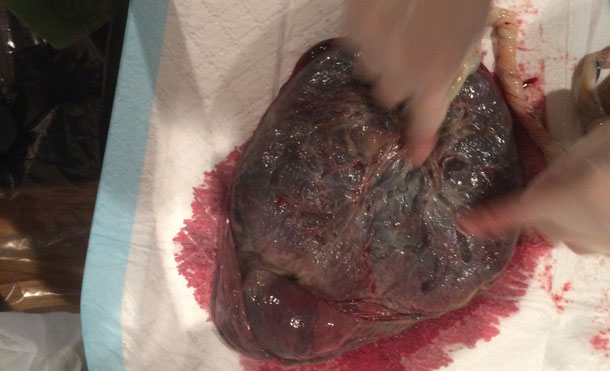
In the photos above and below you can see the midwife examining the baby’s side of the placenta to make sure that there are no obvious abnormalities.
The midwife takes particular note of where the baby’s umbilical cord is inserted into the placenta. In this case, the umbilical cord is inserted in the middle which is known as ‘central insertion’. Sometimes the cord is inserted on the side of the placenta which is known as a ‘battledore insertion’. Rarely the cord can be inserted into the membranes instead of the placenta which is called ‘velamentous insertion.
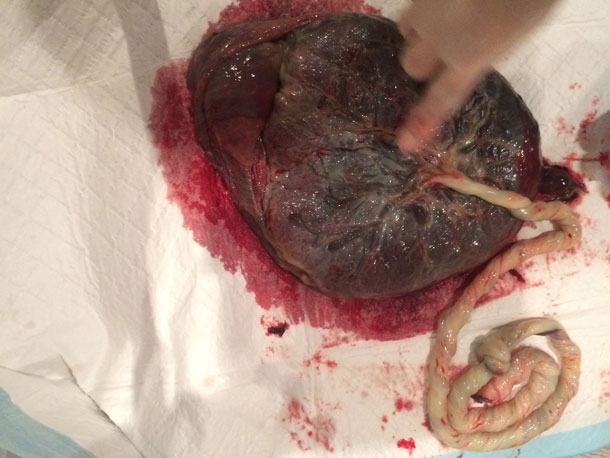
In the photo below the midwife has brought the membranes around to the front so you can see the membrane sac that the baby developed in.
The midwife is providing an explanation to the baby’s mother about the placenta.

In the photo below the midwife is checking the membrane and making sure that there are two membranes. We also know it as the amnion and chorion.
You can peel apart the two membranes that stick together.
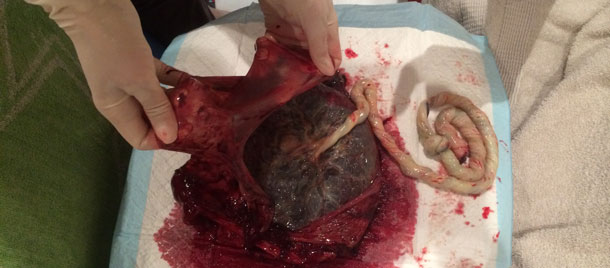
The midwife has turned the placenta over in the photograph below.
She begins to examine the placenta to make sure that it is complete and that they did not leave anything inside the mother.
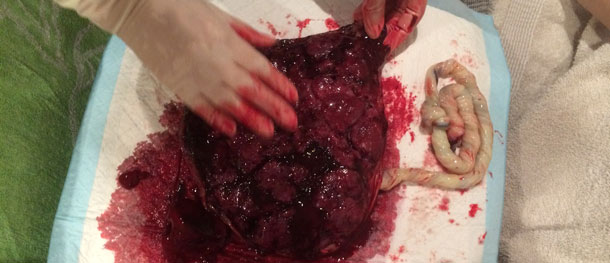
The mother’s side of the placenta should be dark maroon in colour.
It should consist of around 20 cotyledons (separate lobes of placental tissue). This is the side that attaches to the wall of the uterus through which the baby receives nutrients and water. This is by which waste products are passed back into the mother’s bloodstream.
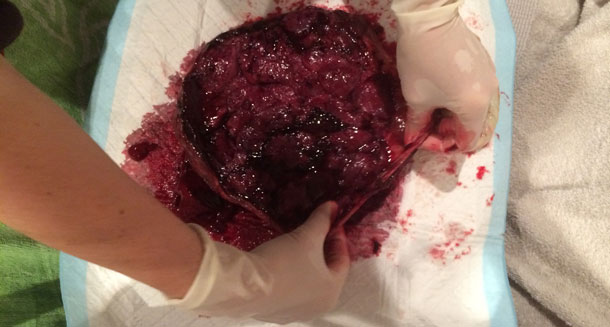
The midwife continues with her thorough examination of the placenta, noting the appearance and feel of the placenta.
These photographs depict a healthy placenta. Sometimes however a placenta may have calcified areas that feel gritty to the touch. It may also have an area that may be white or grey in colour indicating that there has been tissue death in that area of the placenta. Noting such anomalies can help the midwife or doctor in providing care for the baby.
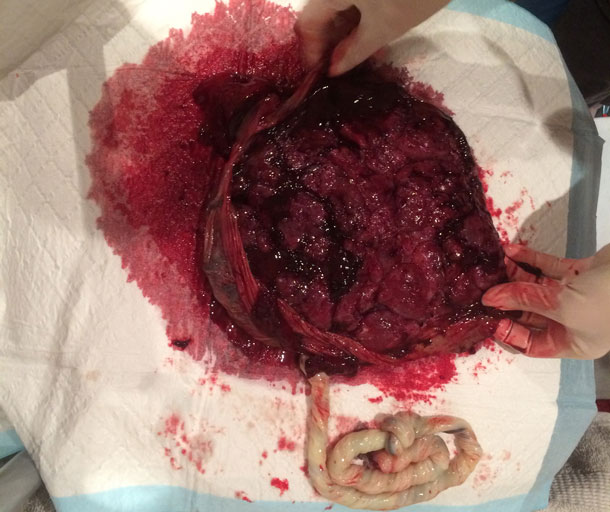
The midwife is examining the cord in the photo below.
She is noting the length of the cord and if there are any knots or blood clots in the cord. At term, the typical umbilical cord is 55 to 60 cm in length. It has a diameter of 2.0 to 2.5 cm. The cord vessels are suspended in Wharton’s jelly. The normal cord contains two arteries and one vein. If you look closely at the photo below you can see two small vessels. These are the arteries and one larger vein.

The one anomaly found when checking this placenta was that there was a true knot in the cord.
To find out more visit this page discussing true knots of the umbilical cord.
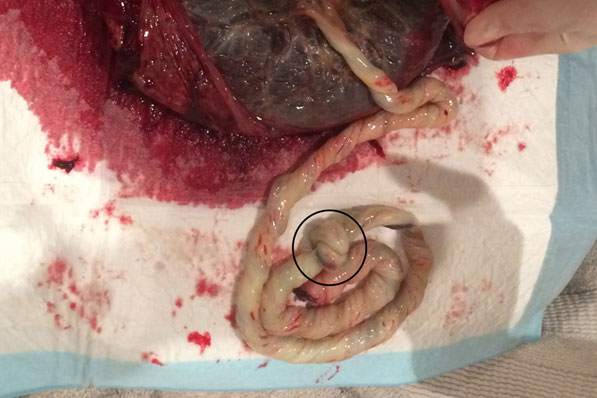
Reference List
Johnson, R. & Taylor, W., (2010). Skills for Midwifery Practice. London, England: Elsevier
Published 25th June 2015

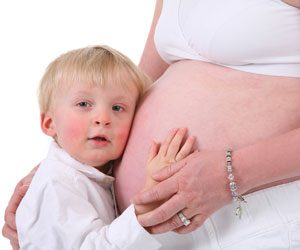
Recent Comments